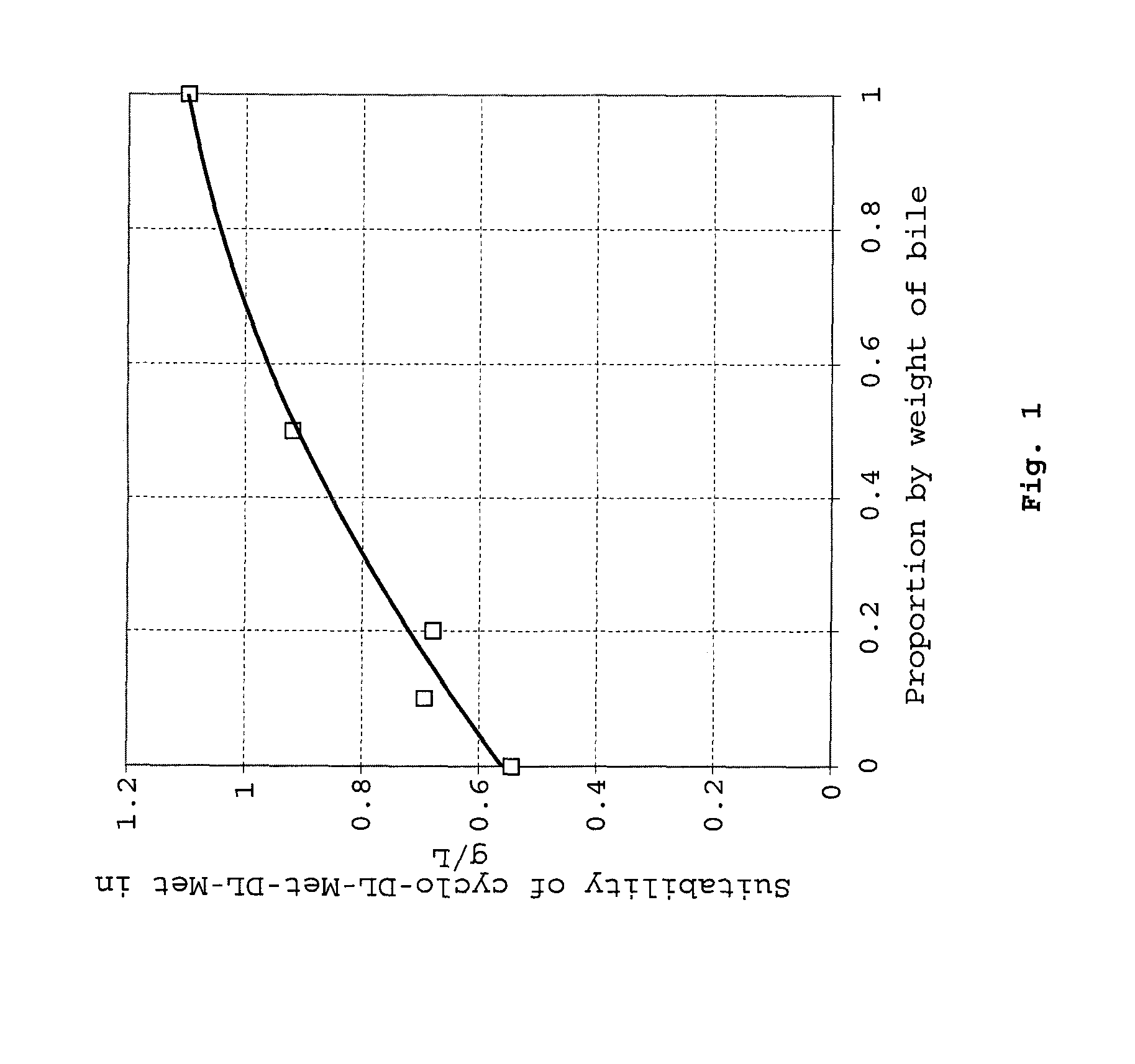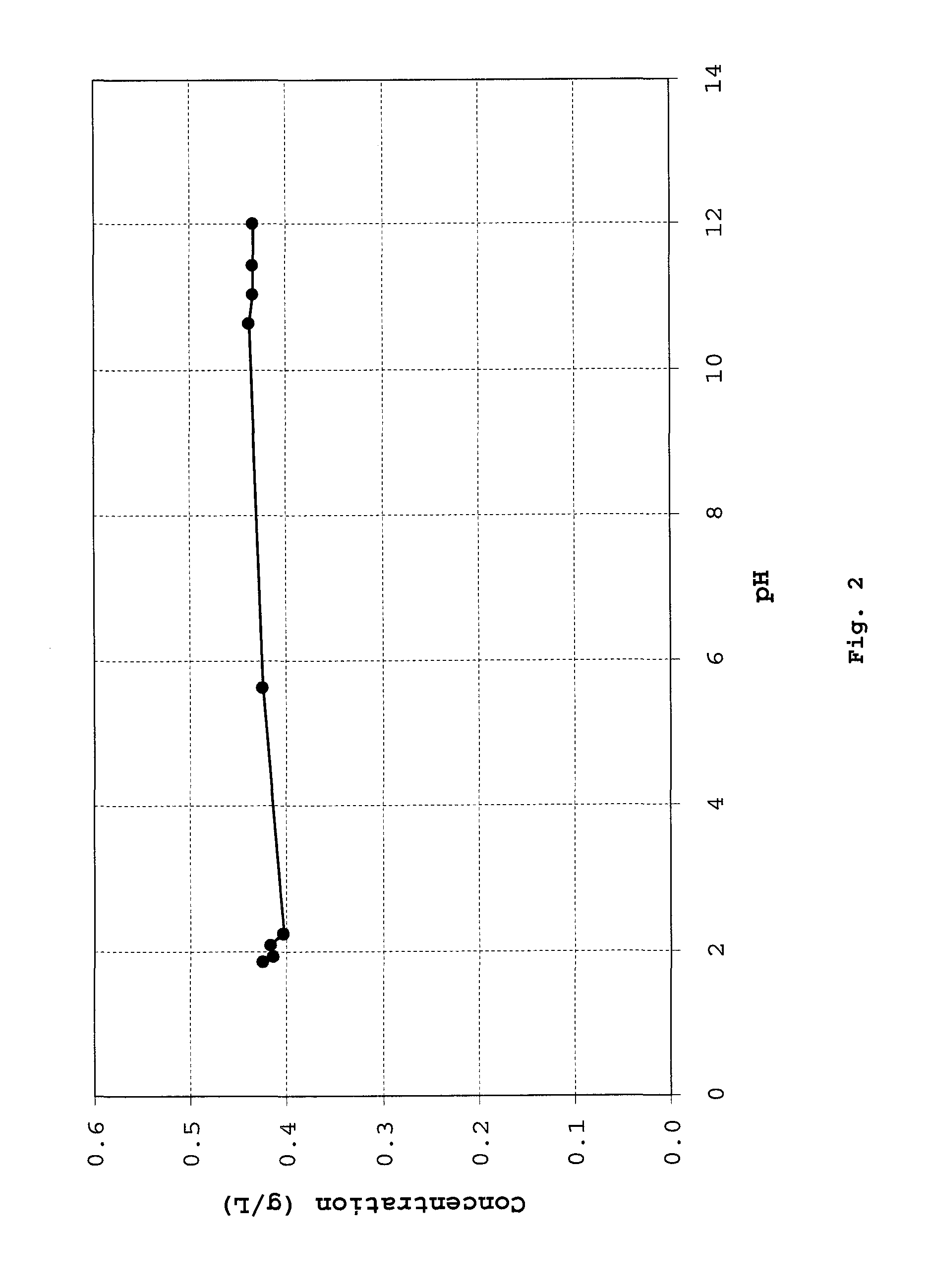Cyclic dipeptides as feed additives
a technology of cyclic dipeptides and feed additives, which is applied in the field of feed additives, can solve the problems of reduced protection, reduced or even complete loss of protection, and ineffective supply of feed with eaas such as methionine, lysine, threonine or also mha in ruminants
- Summary
- Abstract
- Description
- Claims
- Application Information
AI Technical Summary
Problems solved by technology
Method used
Image
Examples
example 1
Synthesis of DL-methionine methyl ester (DL-Met-OMe)
[0079]200 g (1.34 mol) of DL-methionine was suspended in 1 L methanol. HCl gas was led into this suspension until the solid had dissolved and then was led in for a further 1 hour. The temperature rose to 60° C. Then approx. 200 mL methanol was distilled from the reaction solution at 30° C. in a rotary evaporator, and during this most of the excess HCl gas was removed. Then NH3 gas was led into the remaining solution at 10-20° C. until the reaction solution had a definite alkaline reaction. The precipitated NH4Cl was drawn off by suction and was washed with methanol. The filtrate was concentrated in the rotary evaporator, taken up in 750 mL ethyl acetate, and washed twice with 50 mL of 10% K2CO3 solution each time, dried over MgSO4 and concentrated in the rotary evaporator.
[0080]Final weight: 203 g (93% of theoretical) of slightly yellowish clear oil.
[0081]1H and 13C-NMR agreed with values in the literature.
example 2
Synthesis of DL-methionine-iso-propyl ester (DL-Met-OiPr)
[0082]200 g (1.34 mol) of DL-methionine was suspended in 1 L iso-propanol. HCl gas was led into this suspension until the solid had dissolved and then was led in for a further 1 hour. The temperature rose to 60° C. Then approx. 200 mL iso-propanol was distilled from the reaction solution at 30° C. in the rotary evaporator, and during this most of the excess HCl gas was removed. NH3 gas was then led into the remaining solution at 10-20° C. until the reaction solution had a definite alkaline reaction. The precipitated NH4Cl was removed with suction and washed with iso-propanol. The filtrate was concentrated in the rotary evaporator, taken up in 750 mL of ethyl acetate, washed twice with 50 mL of 10% K2CO3 solution each time, dried over MgSO4 and concentrated in the rotary evaporator.
[0083]Final weight: 233 g (91% of theoretical) of slightly yellowish clear oil.
[0084]1H and 13C-NMR agreed with values in the literature.
example 3
Synthesis of 3,6-bis[2-(methylthio)ethyl]-2,5-piperazinedione (DD / LL / meso-cyclo-Met-Met) from DL-methionine methyl ester (DL-Met-OMe)
[0085]
[0086]272 g (1.67 mol) of DL-methionine methyl ester was heated to 130° C., stirring well, and stirred at this temperature for 2 hours. 36 g methanol was distilled off and the cyclo-Met-Met crystallized out. After cooling, 250 mL methanol was added to the crystal slurry, it was stirred briefly, filtered with suction, washed with methanol and dried in the vacuum drying cabinet at 30° C. The filtrate was concentrated in the rotary evaporator at 40° C. and returned to the next batch.
[0087]Final weight: 149 g (68% of theoretical) of white solid, purity >99% (HPLC), melting point 235-236° C.
[0088]1H-NMR of 3,6-bis[2-(methylthio)ethyl]-2,5-piperazinedione (500 MHz, d6-DMSO): δ=1.85-2.05 (m, 4H, 2×SCH2CH2); 2.049 (s, 6H, 2×SCH3); 2.46-2.60 (m, 4H, 2×SCH2); 3.92-3.99 (m, 2H, 2×CH); 8.213 (s, 2H, 2×NH)
[0089]13C-NMR of 3,6-bis[2-(methylthio)ethyl]-2,5-pipe...
PUM
| Property | Measurement | Unit |
|---|---|---|
| temperature | aaaaa | aaaaa |
| pH | aaaaa | aaaaa |
| temperature | aaaaa | aaaaa |
Abstract
Description
Claims
Application Information
 Login to View More
Login to View More - R&D
- Intellectual Property
- Life Sciences
- Materials
- Tech Scout
- Unparalleled Data Quality
- Higher Quality Content
- 60% Fewer Hallucinations
Browse by: Latest US Patents, China's latest patents, Technical Efficacy Thesaurus, Application Domain, Technology Topic, Popular Technical Reports.
© 2025 PatSnap. All rights reserved.Legal|Privacy policy|Modern Slavery Act Transparency Statement|Sitemap|About US| Contact US: help@patsnap.com



